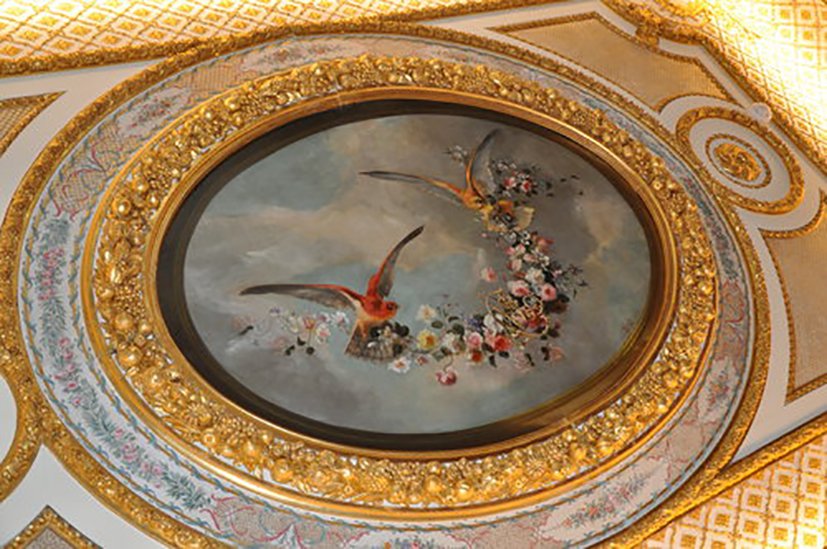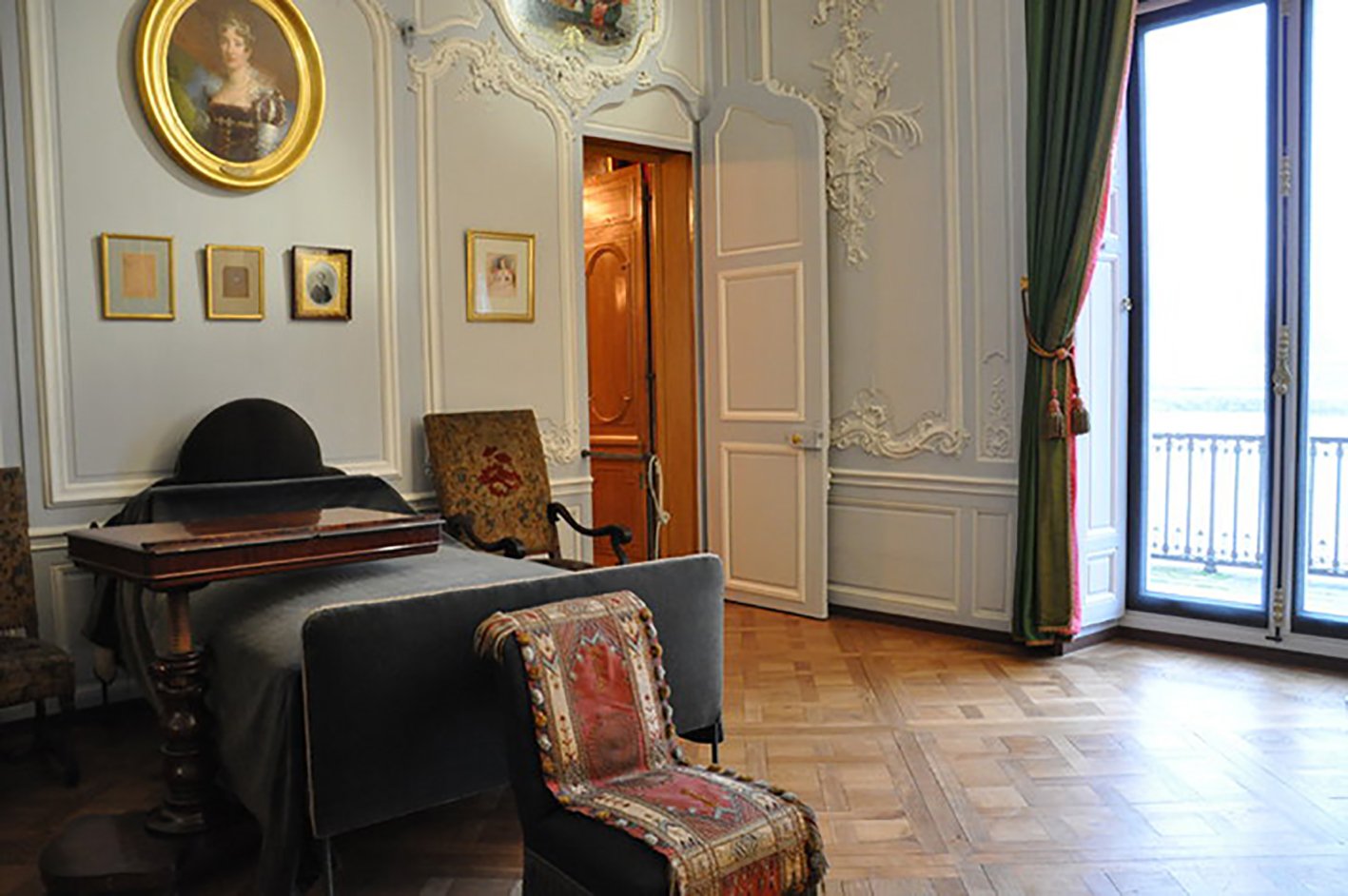THE REOPENING OF THE DOMAINE DE CHANTILLY
On February 23rd 2019, the private apartments of the Duke and Duchess d’Aumale will reopen their doors after almost two years of renovation works. Designed and decorated between 1845 and 1847 by Eugène Lami, the eight rooms recently received a significant restoration of their decor and furniture. This is a unique occasion for its visitors to experience the splendour of the July Monarchy hidden in the Château de Chantilly - the only princely apartments entirely preserved in France.
The Private Apartments throughout History
Built between 1557 - 1558 by architect Jean Bullant on behalf of Anne de Montmorency in the heart of the Petit Château Renaissance (Little Renaissance Castle) - the oldest side of the domain, the Private Apartments of the Duke and Duchess d’Aumale are among the spaces bursting with history and emotion of the Chateau de Chantilly.
It was here, on the ground floor of the Petit Château Renaissance, between the courtyard and the pond, that Henri d'Orléans, Duke of Aumale and heir of the last Prince of Condé, commissioned the architect Victor Dubois and decorator Eugène Lami for the installation of his private apartments, after his marriage with his cousin Marie-Caroline-Augusta de Bourbon-Siciles on November 25, 1844.
The Romantic era placed history at the heart of its interests and aspirations and the Princes of Orléans became very passioned about it, the Duke of Aumale in particular.
As the heir of a secular chateau which had succeeded to some famous dynasties such as the Montmorency and the Bourbon-Condé, and following its restoration, the historian Duke officially gained possession of the new apartments and intended to engrave his name in history and pay tribute to his predecessors.
Grand Palais Domaine de Chantilly
The chairs and armchairs made by Alexis Ternisien combine the Louis XV and Louis XVI styles with more modern forms. The chairs are the precursors of what would become the ‘Empress style’, reminding of the seats that Georges Jacob had designed for Marie-Antoinette.
The significant works at the Apartments of the Duke and Duchess of Aumale started in the spring of 1845 and advanced rapidly: the ceilings of the Duchess' bedroom and the Violet Salon were ready at the end of that same year. Dubois resigned in May 1846, in favour of Eugène Lami who would gain total authority over the project and carefully took care of every stage of the project with the help of the upholsterer Alexis Ternisien. The installation of curtains was ready on January 1st 1847, and the last pieces of furniture received a couple of months later, in March. The ducal couple moved in their new apartments in April and May; this would be a perfect occasion for grand soirées where all the aristocratic elite of the time was invited.
The Duchess’ bedroom
Narcisse-Virgile Diaz de la Peña
Ceiling medallion in the Duchess’ bedroom with budgerigars holding a garland of flowers with the initials «C» and «A»
In the Duchess' bedroom, the 18th century style is predominant, with accents of the Louis XV and Louis XVI styles which entwine distinctively. Here, the same as at the Tuileries, the ladies' apartments had to echo this adored style which was in conformity with the status of Princesses of Orléans. Lami visibly took inspiration from the wood panelling of the Grand Apartments of Chantilly and the painted decors of the Singeries, giving them a completely new theatricality.
The Grande Singerie - This boudoir displaying mural paintings in Chinoiserie style - very much in fashion in the 18th century, was entirely decorated in the 1730s by Christophe Huet. The murals depict monkeys performing funny human gestures, ridiculing men and their foibles.
The Duchess’ bedroom
Secrétaire in the Duchess’ suite
Duke of Guise’s cradle in the Duchess’ bedroom with portrait of his mother, Marie-Caroline-Augusta de Bourbon-Siciles, Duchess of Aumale (1822-1869) by Franz Schrotzberg
The Salon de Guise
Also called the ‘Salon des Dames’ (Ladies’ Salon), this antechamber was renamed ‘Salon de Guise’ in memory of the youngest son of the ducal couple, François of Orléans, Duke of Guise, who died in 1872. Combining the Louis XV and Louis XVI styles, the woodworks had been inspired by those of the Grand Apartments.
Eugène Lami - The First Modern Designer
The forefather of celebrated designers of the 19th and 20th centuries who had shaped with taste and art the interiors of their fortunate patrons, Eugène Lami developed at Chantilly one of his first interior design projects, however not of lesser importance.
Trained as a painter by Horace Vernet and Antoine-Jean Gros and master in the art of aquarelle, Eugène Lami had embarked on a trip across the Channel where he had been impressed by the luxurious cottages of the English countryside. Hired by King Louis-Philippe as a historical painter at Versailles and appointed later as drawing master of the Duke of Nemours - brother of the Duke of Aumale, he would become acquainted with the Orleans family, notably with the Duke of Orléans, with whom he shared the same aesthetics, and design their apartments at the Tuileries Palace.
However, instead of contenting himself with the Royal Palace, Lami started hunting for treasures and objets d'art for the Duke of Aumale among the most famous art and antiques merchants of that time: Beurdeley, Henri, Escudier, Gansberg, or simply made use of the heritage of the Princes of Condé. At Chantilly, he implemented the same method as for Tuileries: reclaiming furniture, collecting objets d'art and antiques, marquetry pieces, with a penchant for Boulle furniture and lavish damask and velvet in vibrant colours, everything in place for a new comfort.
Cylinder Desk in the Duke of Aumale’s Bedroom - Oak with pear wood, rosewood veneer, ebony and brass. Gilded bronze.
Designed by Brothers Jean-Michel and Guillaume Grohé, this type of desk is referred to as ‘minister desk’ and was offered to Duke of Aumale by his father, King Louis-Philippe in 1847. © Grand Palais Domaine de Chantilly
Some pieces of furniture and decor was carefully curated by the decorator for the Duke, others would be specifically designed and executed for the occasion by Parisian artisans in fashion, most notably brothers Guillaume and Jean-Michel Grohé, for a consistent result. After the fall of the July Monarchy, Lami continued to work for important figures close to the Orléans family, especially the Rothschilds, becoming their favourite decorator.
The Duke’s bedroom
Eugène Lami's creativity and researches proved to be of a real archéological and historical value. Thanks to him, Chantilly shelters some of the first examples of decorative ensembles of historical styles or neo-styles.
Photo credit: Grand Palais Domaine de Chantilly













